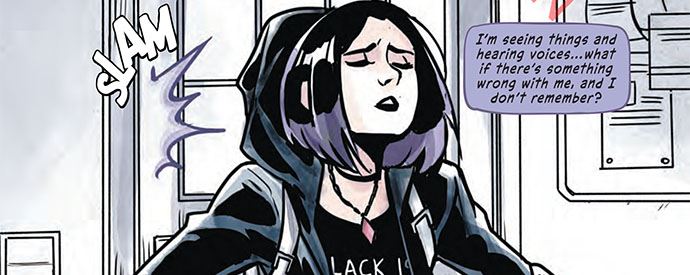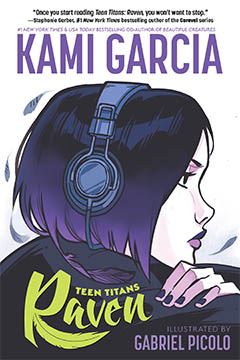- Comics
- Comics Reviews
- Manga
- Comics Reviews
- European Comics
- News
- Comics News
- Press Releases
- Columns
- Spotlight
- Digital Comics
- Webcomics
- Cult Favorite
- Back Issues
- Webcomics
- Movies
- Toys
- Store
- More
- About

By Philip Schweier
June 18, 2019 - 09:35
Clearly,
Teen Titans: Raven is aimed at younger readers – probably girls – so with my
45+ years of reading comics, I’ll be the first to suggest I’m the wrong person
to review it. But I’ll also be the first to admit it won me over, so I’m confident
it will be a success among its target audience.

I was a teenager myself, when Raven first appeared in the pages of DC Comics Presents #26. As a long time reader of the New Teen Titans series, I watched her struggle as a hero, and grow as a character. But that particular Raven is gone, and now some four decades later, that’s as it should be. When Raven debuted in 1979, Superman was a different character than he was in 1939. Change is inevitable.
It’s
enough to recognize that this Raven rings true with the female teen audience as
I know it. She reminds me greatly of someone in my life, so it may be
projection on my part.
The new Raven is more of an angst-ridden teenager, shuffled from one foster environment to another, which has created a witch’s brew of emotional confusion, interpersonal inadequacies and feelings of isolation.
Sure, you could blame her father, Trigon, but daddy issues aside, it was the original Raven that brought the New teen Titans together. This Raven is more inclined to disappear into the woodwork like most sullen teenagers.
In a comics panel at a convention, comics writer Marv Wolfman indicated that when he re-invented the Teen Titans back in 1979, he didn’t solicit the thoughts and opinions of previous creators. So he doesn’t expect current writers to extend that courtesy to characters he’s helped develop, but writer Kami Garcia did so, and apparently received his blessing to reinvent Raven (somewhat).
Following an auto accident, Raven suffers amnesia, and begins to re-discover her mystical powers for the first time. Readers accompany her on the journey, vicariously enjoying her taking local bullies down a peg or two. Meanwhile, she grows more comfortable in her new social environment, though it is laced with confusion and betrayal. I may be jaded or uninformed (or both), but there is an obligatory “Hey, lesbianism exists” moment, which seems important to the teen female audience. Is it token or legit? I can’t say, I don’t relate.
Gabriel Picolo’s artwork serves the story quite well, simple enough to not overwhelm the reader with visuals, but not so simple it fails to serve the story. David Calderon employs a “less is more” strategy to the coloring, sticking to a blueish/purple palette that suits Raven to a T.
Rating: 8/10